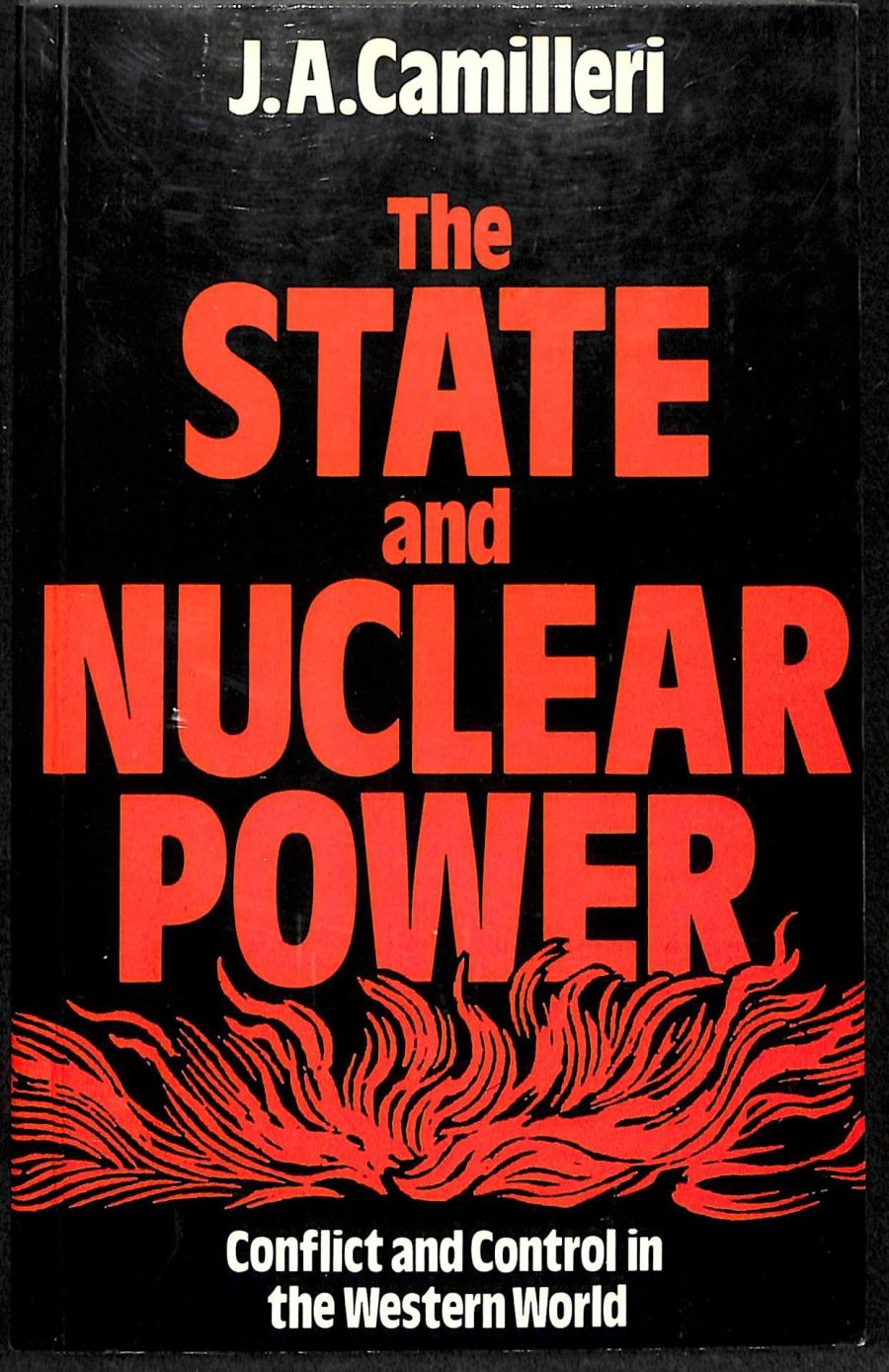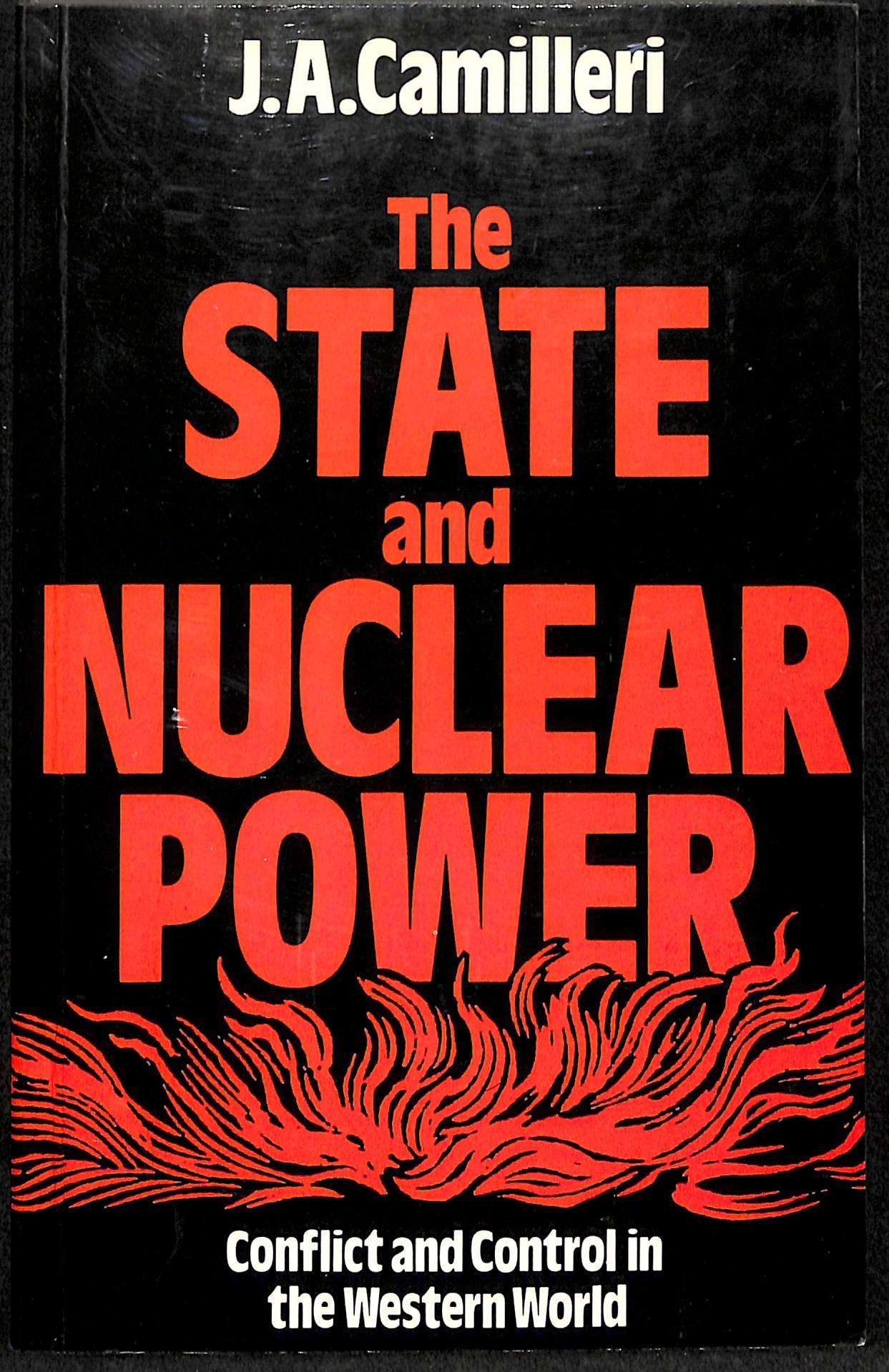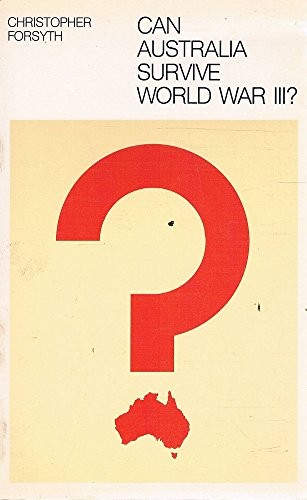
- Free Article: No
- Contents Category: Military History
- Review Article: Yes
- Article Title: Towards the burning
- Online Only: No
- Custom Highlight Text:
Proponents of both nuclear power and nuclear weapons have often argued that the debate on these matters is best confined to those expert enough to comprehend the technical complexities involved. These two books are contributions to that debate based on an alternative view – that the nuclear issue is increasingly central to national and international politics and indeed to the question of human survival. As such it demands the widest possible debate and understanding.
- Book 1 Title: The State and Nuclear Power
- Book 1 Biblio: Penguin Pelican, 348pp., biblio, index, $12.95 pb 0 14 02 2574 9
- Book 1 Cover Small (400 x 600):

- Book 1 Cover (800 x 1200):

- Book 2 Title: Can Australia Survive World War III?
- Book 2 Biblio: Rigby, 206pp., biblio., index, $12.95 pb 0 7270 1877 9
- Book 2 Cover Small (400 x 600):

- Book 2 Cover (800 x 1200):

A wealth of information is presented in support of the argument which is assisted by concentrating on six Western countries chosen to reflect the differing ways in which state intervention has occurred and conflicts have arisen. This focus is valuable in ensuring the discussion is solidly grounded in historical and comparative evidence. It has the obvious limitation of excluding detailed reference to the nuclear industry in Eastern bloc and communist countries which have generally been no less enthusiastic in embracing the nuclear option.
After Hiroshima and the end of World War II the United States was faced with the major dilemma of how to develop the non-military use of nuclear energy in a way that attempted to clearly separate it from its military origins. While much of the scientific community was full of optimism about the prospects for nuclear energy as an ideal means of fuelling economic growth and overcoming possible energy shortages, private capital was more cautious.
As the nuclear industry expanded in the United States and subsequently in Europe it became clear that the state would need to continue to actively intervene in a wide range of areas to sustain the industry’s viability. Substantial financial incentives, risk insurance and technological assistance have generally been provided along with the products of state funded research and development and training. In addition the state has had to provide a regulatory framework aimed at maintaining public confidence, attempting to prevent potentially disastrous health and environmental consequences and the hazards of nuclear proliferation.
The author points to substantial differences between countries depending on the level of state or private involvement, variations in energy demand and supply and the general political and economic environment. The role of the state has also changed over time with the need to respond to the effects of economic recession, the fall in the rate of growth in electricity demand and the increasing problems of waste disposal, enrichment and reprocessing.
Such intervention, it has been argued, has raised new dilemmas, and this is particularly evident in the conflict between the aims of national independence, prestige and security as against the need to develop an international regulatory framework to limit nuclear proliferation while at the same time facilitating the expansion of nuclear industry export markets. This is a conflict of particular relevance to the debate over Australian uranium exports and the evidence presented here is not comforting. It strongly suggests that national economic and political interests have generally been incompatible with the development of effective international safeguards agreements.
This technical, economic and political intervention by the state has occurred in the context of increasing public opposition to nuclear power and this has required the state to take on another role – that of protecting and legitimating not only the industry but, at times even more fundamental concerns.
The author provides a useful summary of the development of anti-nuclear protest and the various forms it has taken. In particular he outlines the way in which protests against nuclear power have been a focus for the development of a wider agenda of protest. This has brought into question the whole assumption of the desirability of economic growth at all costs and the increasing levels of central state and corporate control which may go with it.
In order to defuse the impact of such opposition national governments have tended to vacillate between tackling the ethical and political arguments head on and emphasising that these are matters best left to technical experts. Thus at times some governments have attempted to incorporate the debate into public enquiries and hearings. When this has failed and the protests have become more threatening in their civil disobedience quite savage forms of coercion and intimidation have been utilised.
Perhaps the most successful measure however has been to simply rely on the emotive power of the prospect of lower economic growth and consumption. By and large Dr Camilleri argues that while the anti-nuclear movements have been successful in forcing the debate over nuclear power into the public arena and at times achieving important delays the state has been successful in sustaining majority support for nuclear power. The forms of this conflict have varied considerably between countries and the anti-nuclear movement in this country would do well to consider some of the historical lessons presented here.
The place of the nuclear debate in the wider debate over the ideology of growth is perhaps not as overwhelmingly central as is suggested here but certainly the author has raised important questions about the way in which the state’s role in the development of nuclear power has been both a key symptom and a cause of a deeper crisis.
At times the book’s emphasis on the provision of detailed information to back up the arguments makes for solid going but in general the writing is precise and clear. Overall this is a most valuable contribution to debates on the development of nuclear power and the increasingly central place of the state as an arena of political conflict.
Christopher Forsythe attempts to tackle a different side of the nuclear debate in Australia Survive World War III? The extent to which the reader agrees with this answer may well depend on his or her acceptance of Forsythe’s philosophical premise.
The book is basically a plea for greatly expanded civil defence facilities in Australia which are seen as essential to ensure the survival of as many Australians a possible in the event of a nuclear war. This proposition is argued in the context of the author’s spiritual philosophy based on the teachings of Swami Muktananda, an Indian Siddha Yoga master who emphasises the importance of inner peace as opposed to the distractions and anxieties of the material world.
Forsythe begins by correctly pointing to the increased danger of nuclear war due to the transition from strategies of mutually assured destruction to those of counter-force, limited nuclear war and controlled escalation. However there is a tendency to overemphasise the possibility of such a war staying limited or of the escalation being controlled. Forsythe concedes the possibility of global escalation but suggests we prepare for other eventualities as well. He seems to miss the point that it is precisely this sort of playing with fire that has increased the chances of a nuclear holocaust. The emphasis on the likelihood of an extensive warning period in which to carry out evacuations or other evasive measures may also be somewhat optimistic.
Australia’s likely status as a nuclear target due to its participation in the ANZUS alliance and, in particular, the hosting of United States nuclear related bases including Pine Gap, North West Cape and Narrungar is clearly established. This does not lead however to a serious questioning of whether removal of the bases and withdrawal from ANZUS would reduce the danger of nuclear war. Forsythe does not follow this line of argument, nor does he take up other ways in which Australia could lessen the nuclear threat by contributing to the development of nuclear free zones in the Indian and Pacific oceans or by ending the export of uranium. His purpose is to concentrate on what would happen to Australia in the event of a nuclear war and how we can survive it rather than what we can do to prevent it.
A substantial proportion of the book concerns the likely effects on Australia given various nuclear war scenarios. A mass of information is presented in an attempt to show that, while the effects of nuclear war would certainly be horrific they would not lead to the annihilation of the whole population.
We are taken through numerous case studies of the effects of blast and fallout on Australian population centres which provide a useful compilation of some (though by no means all) the evidence on likely deaths, injuries and environmental destruction. As is often the case, this kind of numerical cataloguing of nuclear horrors tends to deaden the reader’s reaction but it is quite central to the argument presented here. If, in the worst instance, 20% of Australian city dwellers might die and a further 20% be severely injured then surely the government that has made us a target has the responsibility to save as many lives as possible by developing comprehensive civil defence facilities?
The author outlines in some detail what this would mean in terms of blast and fallout shelters, evacuation procedures and careful planning for post nuclear war economic, political and psychological survival. He argues also that Australians are particularly well placed to survive a nuclear war due to our isolation from the Northern hemisphere, our sprawling urban populations and our vast uninhabited spaces.
He concludes by emphasising what he sees as the most important step – the acceptance of a spiritual philosophy which rejects our attachment to the importance of our physical selves and our fear of death. Rather he suggests that we should adopt a philosophy of “serenity and acceptance” of “the will of God” and the working out of “cosmic cycles”.
The implications of such a philosophy are disturbing in as much as they imply a serene acceptance of the inevitability of nuclear war and an extremely individualistic, apolitical and, at times naive response to the possibilities of resistance and nuclear disarmament.
The option of civil defence has been firmly rejected by the nuclear disarmament movement in the Northern Hemisphere as a cruel confidence trick which in effect increases the chances of nuclear war by getting people used to the prospect and providing an illusory sense of the probability of survival.
It may well be true that, if anyone survives a global nuclear war Australians stand a relatively good chance but the question of the kind of society that they would survive in remains. Forsythe argues that the living would not envy the dead but the portrait he provides of a devastated population clinging to survival under the orders of the quasi-fascist remnants of central government does not convince this reviewer. It is in the end a matter of opinion.
But there are other problems. It is, for example, quite possible that the environmental effects of a “nuclear winter” would be such as to genuinely raise doubts about the prospect of human survival. The point is, as Jonathon Schell has said, that we don’t know and perhaps cannot know whether or not nuclear war would mean annihilation. The stakes are too high to take the gamble.
Forsythe wishes the disarmament movement well but sees its task as almost impossible given what he sees as the nature of human aggression and the ruthless logic of nuclear escalation. He sees a leap of faith being required to envision effective nuclear disarmament. This is an odd criticism coming from a writer who talks of “cosmic plans” but in a sense it is correct. To work in whatever way for nuclear disarmament does require some faith in the potential for fellow humans to act to avoid what is indeed an unthinkable alternative.
Civil defence may save lives in a nuclear war. It may also increase the chances of such a war by getting us used to the prospect. The debate on such matters is an important one and one perhaps particularly relevant in Australia. This book is a commendable, if at times confused contribution to this debate. The author’s leap of faith towards civil defence is. however, in the wrong direction.


Comments powered by CComment